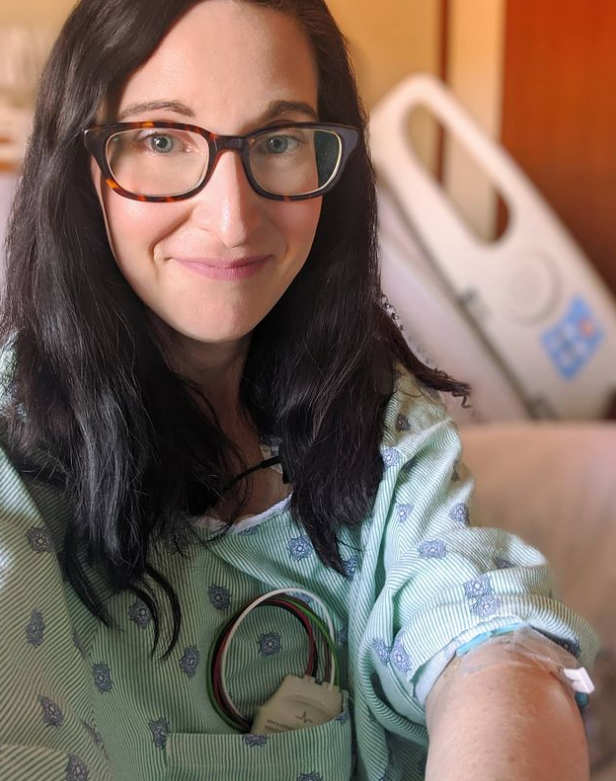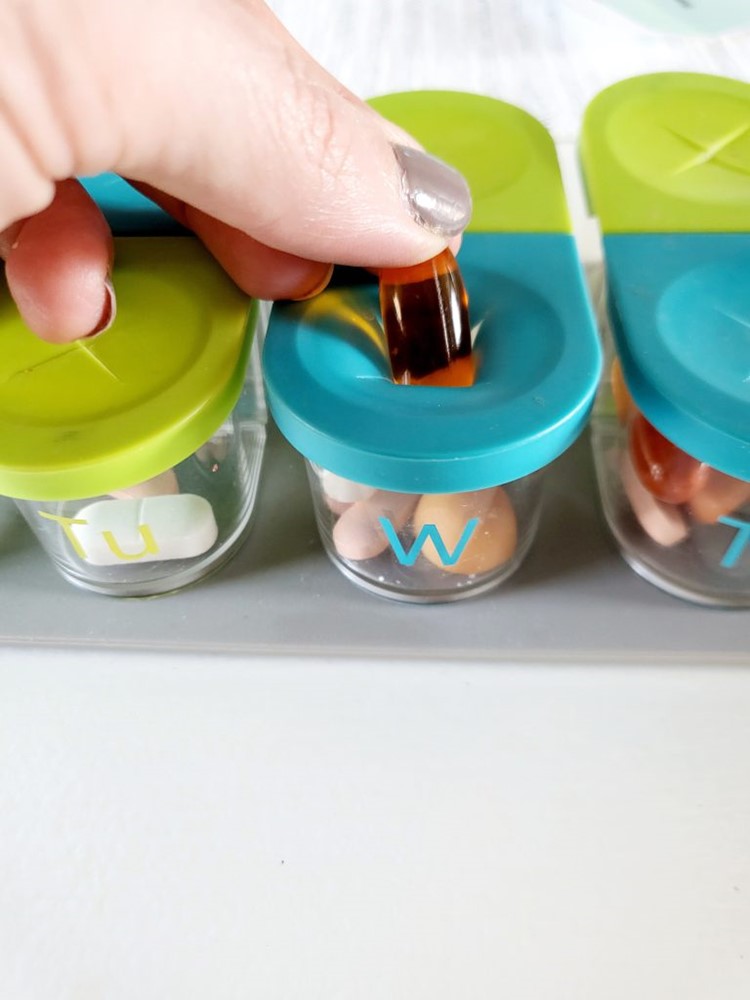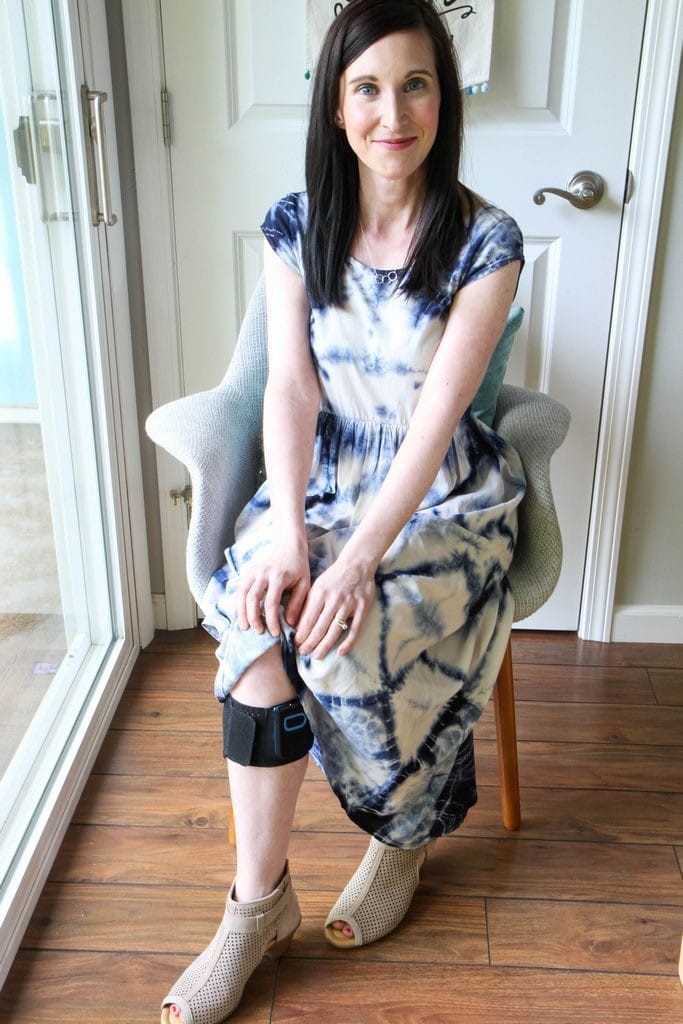Here are the signs and symptoms to look for and the resource list I wish I had when I received my Ehlers-Danlos Syndrome diagnosis.

May is Ehlers-Danlos Syndrome Awareness Month and I do my best to use my platform to educate and transparently share about my journey with this disease.
It has always felt like a tricky terrain to share, without sympathy or attention-seeking, but to offer the information that I wish I had years and years ago.
Ehlers-Danlos Syndrome is considered a rare disease, but I think many doctors would challenge this and say that it is rarely diagnosed instead. As more awareness is raised, more and more people are able to get answers sooner for themselves and for their children. That is what this month is all about.
I have the most common type and it is the Hypermobile Ehlers-Danlos Syndrome.
Personally, I struggle with joint pain (jaw, hands, elbows, feet, hips, and neck), frequent rib subluxations, managing wild allergic responses, heart rate fluctuations, blood pressure fluctuations, insomnia, chronic pain, and temperature regulation.
Each person who has this has different challenges. No two patients are alike and we never want to discredit anyone’s experience that is suffering.
Let’s quickly break down what EDS is, how to get diagnosed, and what other disorders are commonly attached to this diagnosis. If you would like to read my own diagnosis story, it is here.
What is Ehlers-Danlos Syndrome (EDS)?
The Ehler’s Danlos Society defines EDS as, “a group of hereditary disorders of connective tissue that are varied in the ways they affect the body and in their genetic causes.
They are generally characterized by joint hypermobility (joints that move further than the normal range), joint instability (subluxation [partial separation of the articulating surfaces of a joint]) and dislocations (full separation of the surfaces of a joint), scoliosis, and other joint deformities, skin hyperextensibility (skin that can be stretched further than normal) and abnormal scarring, and other structural weakness such as hernias and organ prolapse through the pelvic floor.
In the rare types of EDS (like vascular type), there is also the weakness of specific tissues that can lead, for example, to major gum and dental disease, eye disease, cardiac valve and aortic root disorders, and life-threatening abdominal organ, uterine, or blood vessel rupture.
The Ehlers-Danlos syndromes are currently classified into fourteen types of Ehlers Danlos. In all but the hypermobile subtype (hEDS) genetics variants have been identified as the cause for the disorder and are part of the diagnostic criteria.”
Some of the most common symptoms include fragile skin, skin that bruises easily, and joint pain from subluxation.
How Is Ehlers-Danlos Syndrome Diagnosed?
The best place to start is with your general practitioner who can perform a simple test called the Beighton Scoring System that will assess your joint hypermobility.
Below is the test that they can do in their office and a description of the scoring system:
They also will want to document your family history (since there is an inheritance pattern) and your medical history. If this data suggests you may have the disease, they usually will refer you out to a specialist. In some cases, genetic testing is available, but it depends on the types diagnosed.
The Ehlers-Danlos Foundation has a directory of physicians you can contact in your area. Many patients, unfortunately, must travel to other states or countries to see a specialist.
If you are local, this is the person that I saw for my official diagnosis.
What is The “Terrible Trifecta”
One thing I wish had been explained to me, in this initial stage (with my general practitioner), is that Ehlers-Danlos Syndrome ALONE is not usually the diagnosis.
Our specialist described each patient as a tree with many branches. EDS is the main issue, but each person has other diagnoses that go along with it.
Most patients (including myself and my children) have “the terrible trifecta” which is Ehlers-Danlos Syndrome, POTS Syndrome, and Mast Cell Activation Disorder.
Mast Cell Activation Disorder is best managed with an allergist and I have been told that some of my joint pain may stem from this branch in my disorder.
Depending on the severity, a cardiologist may be involved with the POTS Syndrome or an experienced PCP (primary care physician) may be able to manage it.
POTS, for me, is the most debilitating because the dysautonomia creates a storm in my body that throws off my balance, makes my heart beat fast, causes my blood pressure to swing, and makes me feel very disoriented. When my POTS Syndrome is stable, my quality of life is much better. Stabilizing things has become the biggest challenge for my physicians and for me.

How I Manage Life With Ehlers-Danlos Syndrome
Now that you know the symptoms of EDS, I’d love to share the resource list that I wish I had when I was diagnosed. I have spent thousands of dollars over the years to manage and treat my pain. I really don’t want anyone else to have to do the same.
This resource list is what works for me and should be discussed with your physician if it is right for you.
Please note, I have chronic insomnia and pain that are being treated with prescription medications. I have not listed these because each person must individualize their treatment with their own physician.

Supplements & Prescriptions
(Note: this is the file with the recommendations for specific diets and supplements as advised by my specialist. I am only listing what has worked for me, personally. I would also encourage you to get your hormones checked because you may need intervention if you are middle-aged.)
Sagely Pill Organizer (this has soft closures and can be partnered with an app for reminders)
Allegra twice daily (to manage mast cell response- morning & afternoon)
Chelated Magnesium 100 mg, twice daily
Fish Oil
Fludrocortisone (for POTS Syndrome this has been key for me. It cut down on my dizziness and keeps my blood pressure more level. Potassium must be monitored regularly.)
2-ounces George’s Aloe (No substitutions. This has helped me more than anything I’ve taken from the Cousack Protocol. I have far less dislocations since using it. For the record, I would say that I’m a skeptic in holistic relief.)
XClear Nasal Spray (this helps some of my mast cell issues at night)
Daily Electrolytes (for low blood pressure- I do two a day)
Work-From-Home Essentials
Pressure-Relief Seat Cushion (I use this for reading in bed and driving too)
Back Relief Lumbar Pillow
Laptop Bed Tray (I use this for reading in bed too- this is one my most well-researched tools to help on bad POTS days!)
Flippy Tablet/Kindle Holder
Sleep Helpers
Cervical roll (can be added to any pillow)
Loona App (recommended by my therapist and has helped greatly)
This Mattress Pad (it adds some cushioning for my joints and helps my temperature issues)
Coop Pillow (can be adjusted based on your body’s needs- the best sleep investment I’ve made)
Working with a TMJ Specialist to Have a Custom Nightguard Made (the most expensive thing ever- worth every dollar)
EDS Books, Apps, & Medical Equipment
The Zebra Club App (teaches movement & stability skills that are as beneficial as working with a physical therapist)
Living Life to the Fullest With Ehlers-Danlos Syndrome (this guide can be used with your physical therapist or you can work through the exercises independently)
Curable App (Bootcamp programs & the app are both beneficial in turning down your pain responses)
Pulse Oximeter & Blood Pressure Cuff (use this data to help with your appointments or to inform you why you aren’t feeling well)
EDS Life Hacks Facebook Group (helpful encouragement with focus on positive solutions)

Pain Management Helpers
Oval-8 Finger Splints (I just use the plastic ones, but they do sell pretty braces on Etsy)
Quell Wearable TENS Unit (here is an in-depth review on this device)
Compression Gloves
Rechargeable Hand Warmers (even used in summer when I have hand pain)
CBD & CBD Balms (this resource has a medical assistance program for low-income families and veterans. Be careful with CBD and low blood pressure- I can’t do it anymore!)
Wearables That Help
Nuboso Neural Insoles (help with balance and spatial awareness)
Loop Experience (these help with balance, spatial awareness, & tone down my anxiety)
Girlfriend Collective Leggings (gentle compression & buttery soft- worth every dollar)
Compression Socks
True Body Bras (they help with my shoulder pain & spatial awareness)
Bomba Slippers (the only time my feet don’t feel miserable)

Extras That Make My Life Better
Infinity Cube (to calm anxiety)
Hair Towels (to cut down on blow-drying time)
Infiniti Blow Dryer (it spins so I don’t have to hold two things)
Olive & June Poppy Tool (so I can do my own nails- must be used with their nail color)
Madison & Reed Hair Color (because I don’t have enough spoons to go to a salon)
Things That Haven’t Worked For Me
Posture Bras or Posture-Driven products (they overcorrect me)
MLM Schemes
Toxic Positivity
I hope that this resource list offers additional support and I will continue to update with items that REALLY WORK as I come across them. Please tell me, what’s helped you manage your symptoms the most?
This post contains affiliate links.